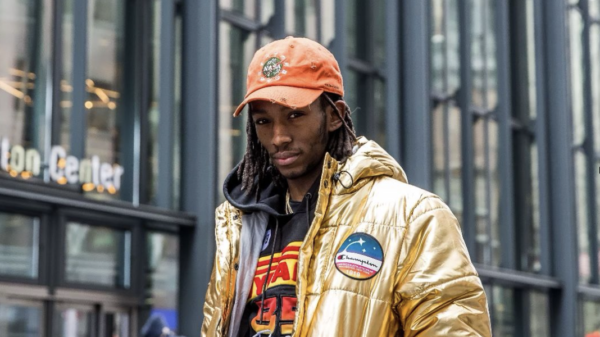Hours after prosecutors rested their sprawling sex-trafficking and racketeering conspiracy case against Sean Combs on Tuesday, prosecutors filed a late-night letter to the court saying they would no longer be pursuing theories that the Bad Boy Records founder was involved in attempted arson, attempted kidnapping, and aiding and abetting sex trafficking.
The alleged acts were listed in Combs’ indictment under Count One, his racketeering conspiracy charge. Prosecutors listed arson and kidnapping as predicate acts that included both substantive and “attempted” acts.
“The Government is no longer planning to proceed on these theories of liability, so instructions are no longer necessary,” prosecutors wrote in their letter to U.S. District Judge Arun Subramanian.
The alleged racketeering conspiracy count still alleges Combs and his co-conspirators engaged in other predicate acts including bribery, witness tampering, forced labor, and drug offenses.
And Combs is still facing separate counts of sex trafficking his ex-girlfriends Casandra “Cassie” Ventura and a woman using the pseudonym Jane, as well as two counts of transportation to engage in prostitution for allegedly paying for male escorts to fly across the country to have sex with his girlfriends while he watched.
The 55-year-old, who seemed to be in good spirits in the final days of his trial, has pleaded not guilty to all charges.
To Mark Chutkow, a former federal prosecutor in Detroit who specialized in racketeering and human trafficking cases, prosecutors streamlining aspects of the predicate acts when giving charging instructions to the jury serves two purposes: minimizing confusion and warding off a possible defense strategy of accusing the government of overreaching.
“I wouldn’t see that as a victory for [Combs] per se,” Chutkow, now a trial attorney at Dykema Gossett, tells Rolling Stone. “That’s just something that happens in large, complex cases where you want to make sure that the jury doesn’t get confused.”
Editor’s picks
“The judge is clearly concerned about jury confusion, but the prosecution should be too because confusion is an advantage to the defense,” Chutkow adds. “The prosecution wants the cleanest case that they can present to the jury, so that there aren’t a lot of disputes and arguments there.”
The alleged kidnapping of former Combs assistant Capricorn Clark in 2004 marks the start of the government’s racketeering conspiracy count against Combs. Clark testified that Combs accused her of stealing diamond jewelry and had a security guard ransack her apartment looking for the items. After the guard found nothing, Clark said she was escorted to a locked, dilapidated office building in midtown where an unknown man administered five consecutive days of lie-detector tests. “He said if you fail these tests, they’re going to throw you in the East River,” Clark testified.
Years later, in December 2011, Clark said she was in Los Angeles working for Combs when he arrived at her apartment. Livid and allegedly toting a gun, Combs had just come from a freak-off with Ventura and discovered the R&B singer was dating rapper Kid Cudi (real name Scott Mescudi). “Get dressed; we’re going to go kill that n—a,” Combs allegedly said. Clark said she was terrified, but when she tried to protest, Combs told her, “I don’t give a fuck what you want to do.”
Clark claimed that as she rode in Combs’ SUV with his driver over to Mescudi’s Hollywood Hills home, the gun was visible in Combs’ lap. She said she stayed in the car as Combs roamed around Mescudi’s house, making a panicked call to Ventura when he wasn’t looking.
Related Content
Weeks later, in January 2012, Mescudi testified that after rebuffing Combs’ attempts to talk about his fling with Ventura, he received a call that his Porsche had been fire-bombed. A hole was cut into the roof, and a Molotov cocktail had been dropped into the driver’s seat of the luxury vehicle, charring the car’s interior and destroying the car. Ventura testified that Combs had earlier threatened to explode Mescudi’s car in his driveway, and Mescudi said he suspected Combs had something to do with the arson attempt.
The third alleged kidnapping incident occurred in January 2009, stemming from Combs allegedly stomping on Ventura’s face in the back of a car after a night out. “I never experienced anything like that before where I was getting really, really badly beaten,” Ventura testified.
Afterward, Ventura said Combs’ security members had to “sneak” her into a hotel, where she stayed for a week as her injuries healed. Although Ventura said she told Combs that she wanted to leave, Combs allegedly refused. “I don’t think I would have gotten out of there smoothly,” Ventura explained when questioned why she didn’t just leave the hotel by herself. “It was not safe. I didn’t have just the resources I need[ed] to get out and move and not have anybody stop me,” she said.
The government’s letter followed hours after prosecutors rested their case, which spanned six weeks and included tearful testimony from many of the trial’s 34 witnesses.
On Tuesday, Shapiro argued there was especially “thin proof” that Combs’ employees had “knowingly participated in crimes with or for Mr. Combs” other than picking up “personal” quantities of drugs. When it came to freak-offs, where the alleged sex trafficking took place, Shapiro claimed Combs and his girlfriends went out of their way to hide the details of Combs’ personal sex life from his staffers, booking male escorts themselves.
Trending Stories
“The assistants set up and cleaned hotel rooms, but they didn’t know much, if anything, about what went on between Mr. Combs and his girlfriends in the hotel rooms, other than they used a lot of baby oil and Astroglide and drank alcohol and perhaps used drugs,” Shapiro said.
This article was updated on June 25 at 1:30 p.m. EST to reflect that prosecutors had amended aspects of three predicate acts.





























